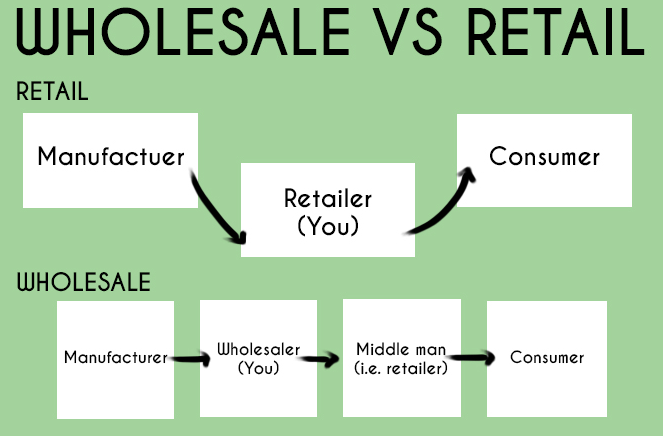

But there’s also a hybrid approach that brings both worlds together.
For instance, SAM’s Club or Costco sells products in bulk to both local small businesses and standard consumers who prefer buying in larger quantities.
The way you manage inventories will depend on your main business approach. The supply chain of a wholesaler looks different than that of a retailer.
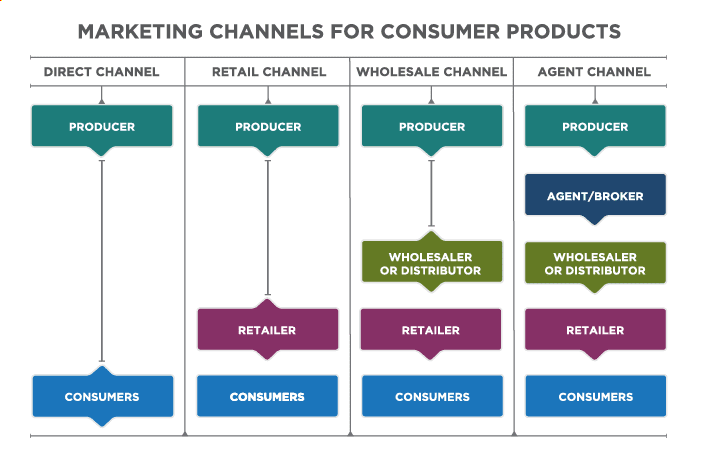
Understanding who you are selling to is crucial to defining your business model and eventually how you manage your inventory.
Now that you understand the theory behind inventory management, it’s time to step into the practice.
We’ll focus on 3 methodologies that’ll give you control over your inventories while reducing your costs and increasing profits.
Although this is not a comprehensive list of all the methods available, it does cover some of the most helpful methodologies to start with.
Let’s break them down:
Just in time is one of the most popular and widely-used inventory management methodologies, and with good reason.
By focusing on carrying little or no inventory, it can be one of the most profitable too, as it helps you balance customer satisfaction with business efficiency.
JIT focuses on answering:
It then focuses on finding a way to deliver the required goods in the shortest lead time possible, without sacrificing quality or increasing costs.
JIT derives from the Japanese word “Heijunka,” which means “Leveling” and consists of 3 elements:
For instance, let’s say you run a handmade cosmetic eCommerce business.
By implementing JIT, you’d start producing new cosmetics every time a purchase order comes in, rather than storing them in a warehouse.
This approach would give you enough flexibility to test customer demand within your market and avoid potential losses in production.
EOQ might sound a bit complicated, but it’s actually quite simple.
In short, EOQ is a formula that helps you calculate your ideal inventory level and determine order quantity based on previous market demand, as well as other variables.
But before we step into the formula, we need to break down its components:
The final formula looks like this:


Choosing 1 out of 5,224 options is definitely not an easy task.
To make your life easier, we’ll cover some of the most essential features to look for in good inventory management software.
This is an obvious yet crucial feature.
The system you choose must help you monitor, manage, and optimize your inventories with ease. This involves a database to store items and the ability to track their status at a glance.
For instance, here’s how Mad Hatter, a hat retail store, uses monday.com to manage its inventory.
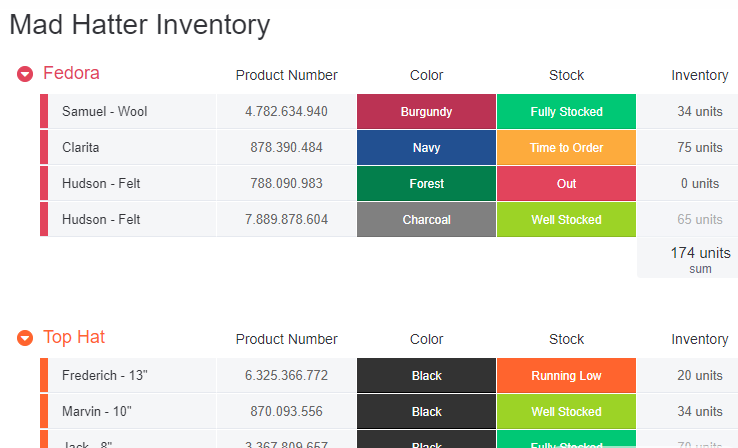
In this case, each group of items represents a specific hat type — e.g., Fedora and Top Hat — whereas line items showcase the desired style.
Mad Hatter uses different column types for certain functions. For instance, it used 2 “Status” columns for different purposes.
One of them indicates the color of the hat, while the 2nd is used to record the status of the item (e.g., in stock, out of stock, running low, etc.).
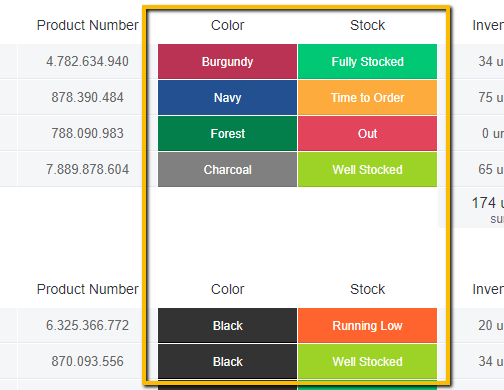
It also used “Numbers” columns to showcase crucial information, such as units and price.
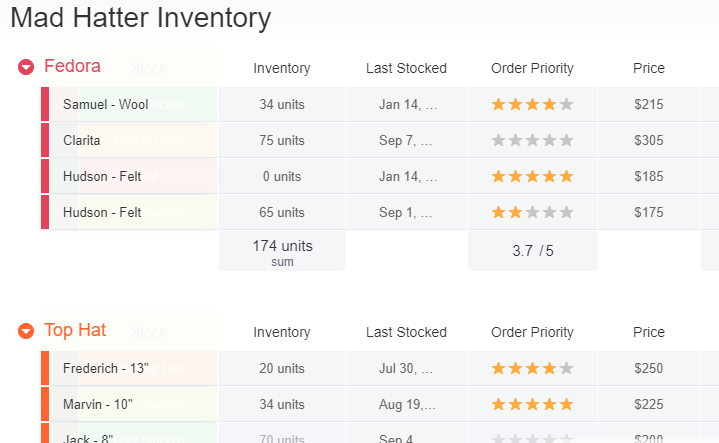
There’s even a “Location” column to display where each item is in the warehouse. This way, employees can easily spot specific items when they need to.
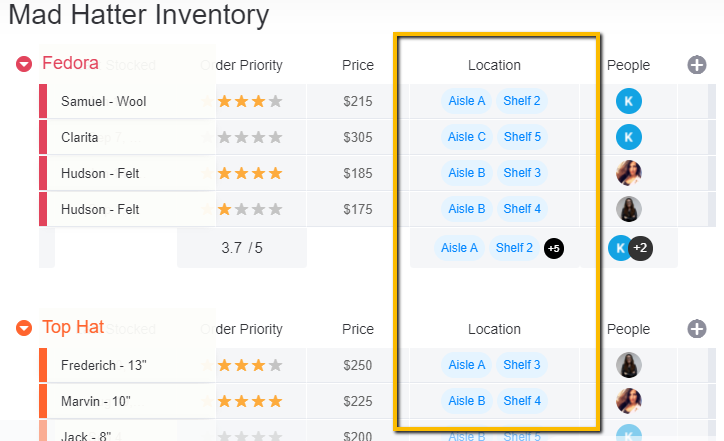
Thanks to monday.com’s customizable features, Mad Hatter was able to build a platform that suits their inventory needs.
But this is just one of the many features any effective inventory control system must offer. So let’s keep going.
In order to stay on top of constantly changing orders, market demand, prices, and more automations allow you to stay on top of your inventory and help move your workflow along.
So, before deciding on a particular inventory software, make sure it offers flexible, ready-to-use workflow automations.
At monday.com, for example, you can use customizable automations to manage almost any workflow involved in inventory management. For example, if you have a number column to track inventory and you know you need to do a reorder when you fall under 35 units, you can set up an automation to send an email to your supplier when the number of units hits 34.
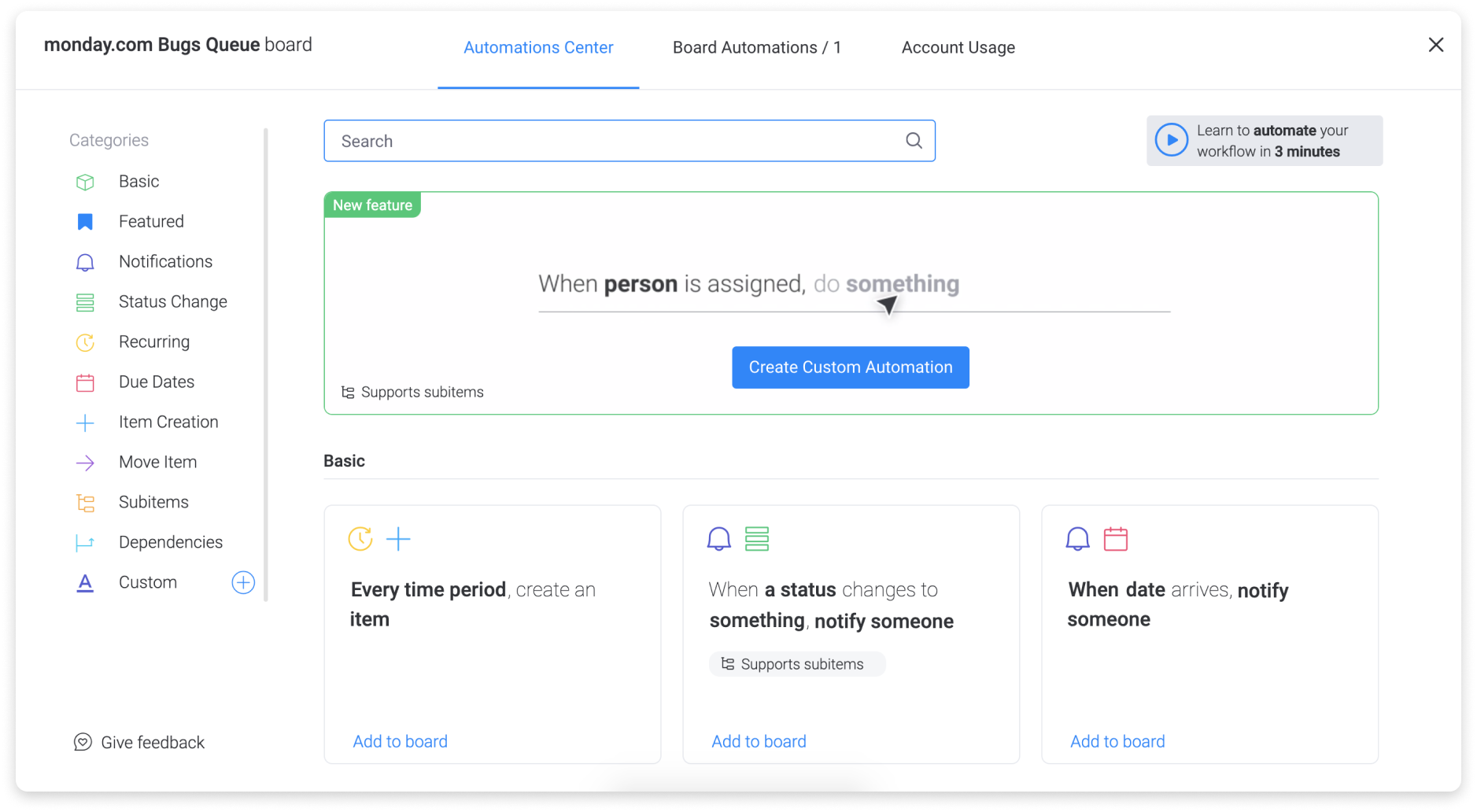
Currently, you can automate:
Mad Hatter uses monday.com’s automations to keep its inventory updated and send alerts every time a specific item is running low.

This way, the company can always make sure nothing slips through the cracks.
To get a complete understanding of monday.com’s automations, we suggest you watch this short video:
The only way to know whether your processes are working is through analysis. Without access to the right inventory data, though, analysis becomes a useless activity.
That’s why any proper inventory management solution must provide you with advanced reporting features and data dashboards.
You can keep your team informed and make the right decisions.
Here’s what reporting looks like on monday.com.
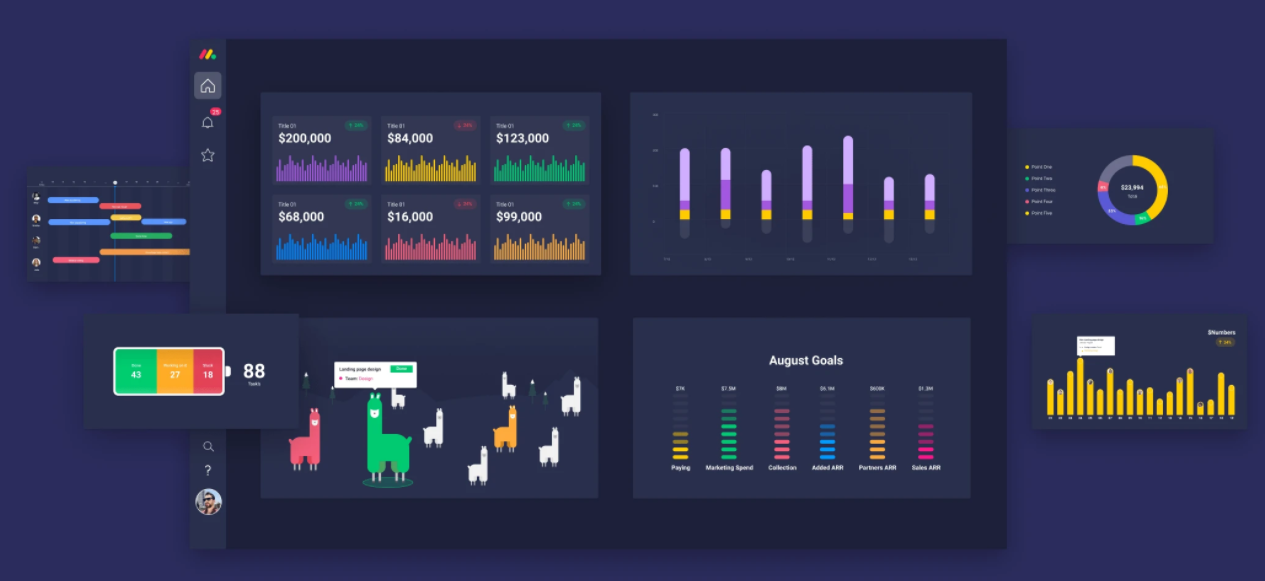
From the start, you get access to more than 21 dashboard widgets that allow you to visualize data in a way that makes sense for your business.
monday.com dashboards pull data from your boards so you can easily visualize how many outstanding orders you have, where you stand with inventory, and if you’re on budget.
For example, Mad Hatter uses the monday.com battery widget to get a quick overview of the stock for each hat type and a number widget to see the total number of units in stock.

And that’s just the beginning.
They also use a chart widget to see an orders breakdown by hat type and a numbers widget to see total units sold.

To see a full overview of our dashboard widgets, you can check out this guide.
As we discussed earlier, your workflow could be completely different depending on if you are managing inventory for a retailer, a manufacturer, or a hybrid model. But, no matter what kind of inventory you manage, there are bound to be unexpected changes and adjustments to your workflow.
Instead of looking for a system that offers a fixed way of working, find a platform that lets you build your own workflows.
For example, monday.com is extremely flexible and customizable.
With hundreds of “building blocks” to move around at will, you can design a digital workspace that feels perfect for your team.
monday.com interface comes with built-in drag-and-drop functionality, so you can build workflows with ease — no training or coding skills required.
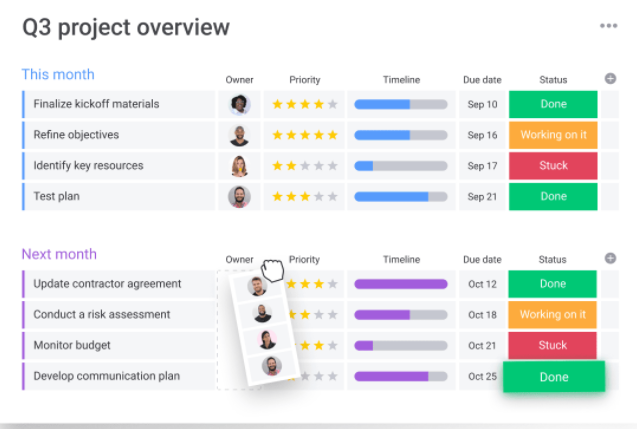
Finally, look for a platform that integrates with the tools you already use.
For example, if you use Excel spreadsheets to track inventories, make sure the inventory management system you choose offers a native Excel integration. This way, you could easily import documents into your new platform.
monday.com offers more than 40 native integrations you can install with one click. This includes marketing tools, CRMs, payment processors, project management platforms, and many more.
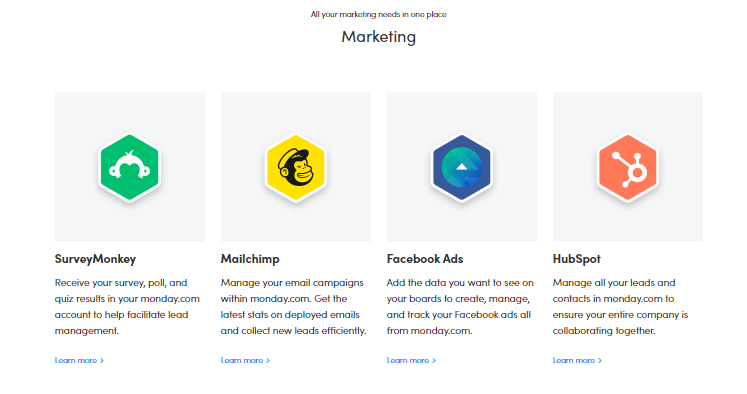
We even provide you with integration recipes so you can automate different tasks and actions.
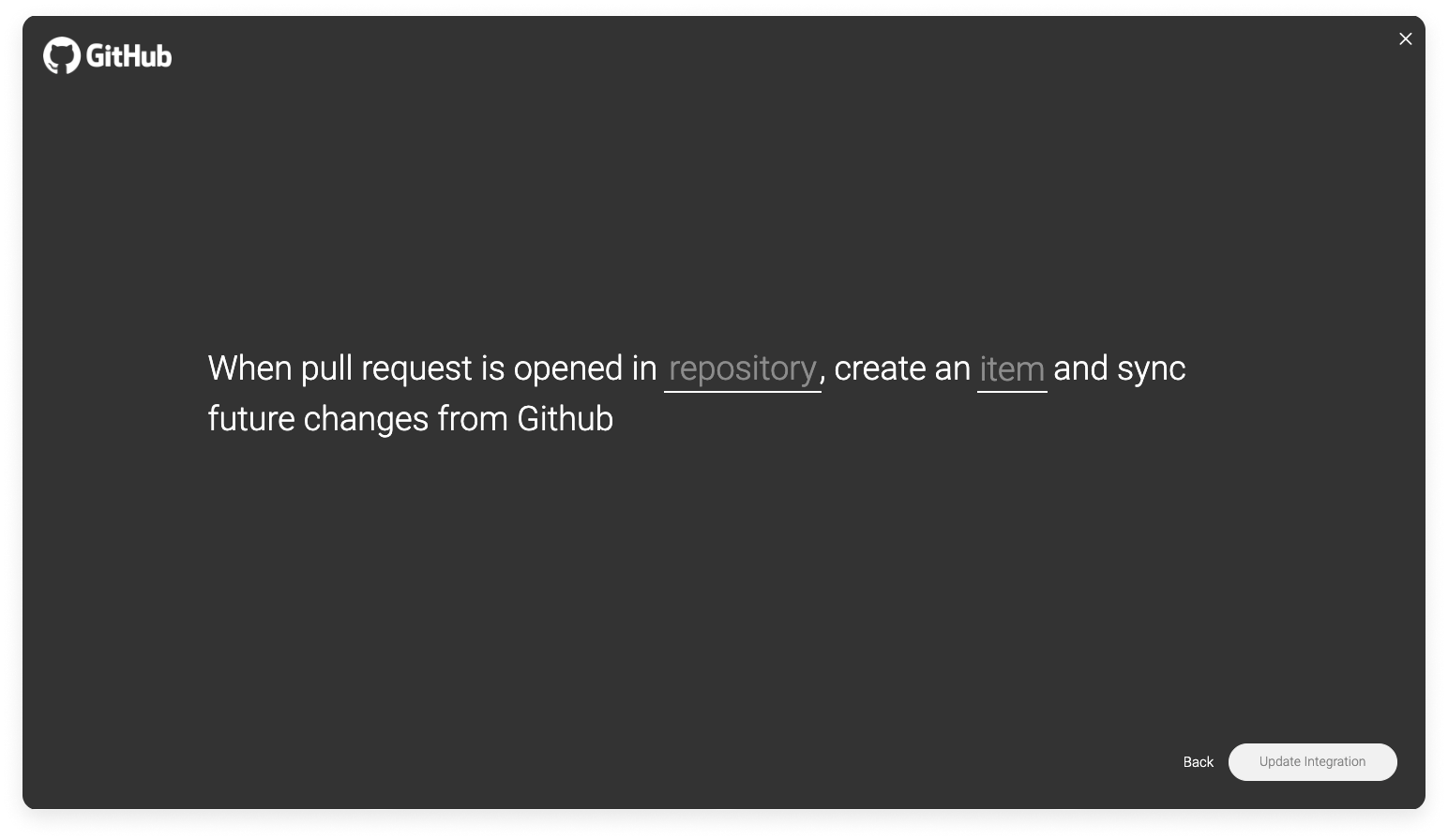
In simpler words, monday.com centralizes all of your team’s work by bringing all of your tools and data under the same roof.

Now that you understand all the basics regarding inventory management and how to choose the right system, what’s next?
Putting that info into practice, of course.
If you’re looking for a platform that meets the criteria we covered earlier, monday.com might be the right solution for you.
Let’s discuss why.
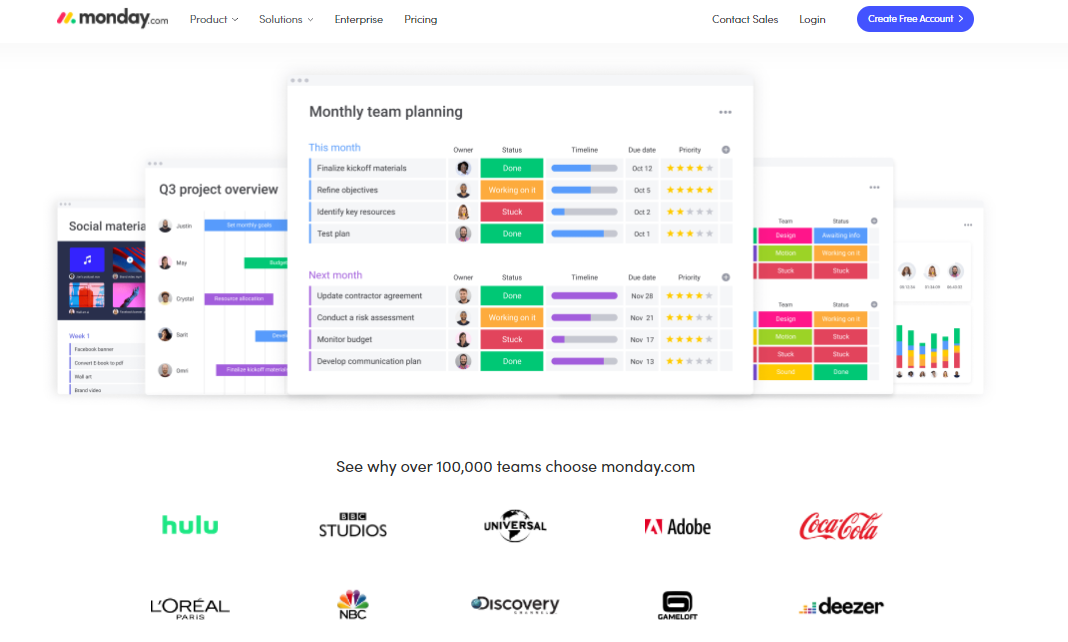
monday.com is a powerful Work Operating System (Work OS) that helps you build custom digital workspaces with ease.
Sure, we provide you with inventory management features, but that’s not even scratching the surface. You can also use monday.com for project management, CRM, marketing automation, manufacturing, construction, and more.
That’s one of the reasons organizations like Adobe, Coca-Cola, Discovery Channel — and over 100,000 others — trust us to run all of their work.
As for inventory management, monday.com offers:
To see a complete list of all monday.com’s features, please check out our product overview page.
To make the process even smoother, we provide you with a premade inventory management template you can use right off the bat.

Keeping your inventory in good health is vital for the success of your organization.
Hopefully, now you have the information you need to manage and track inventories in a more efficient way.
And if you’re looking for a system that makes you more productive and reduces the risk of error, monday.com could be the platform you’re searching for.
To start, try our fully customizable inventory management template and modernize your processes this year.